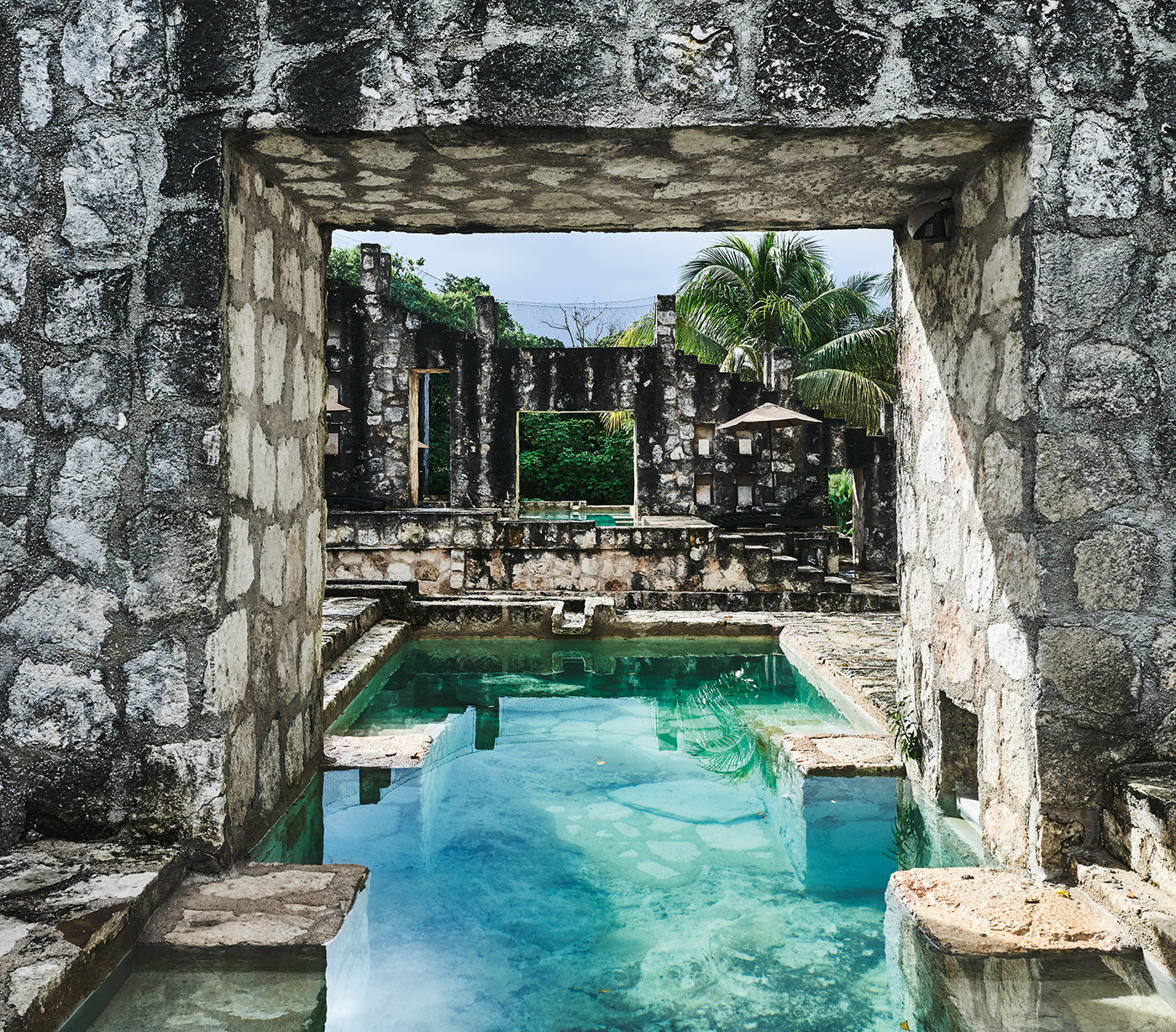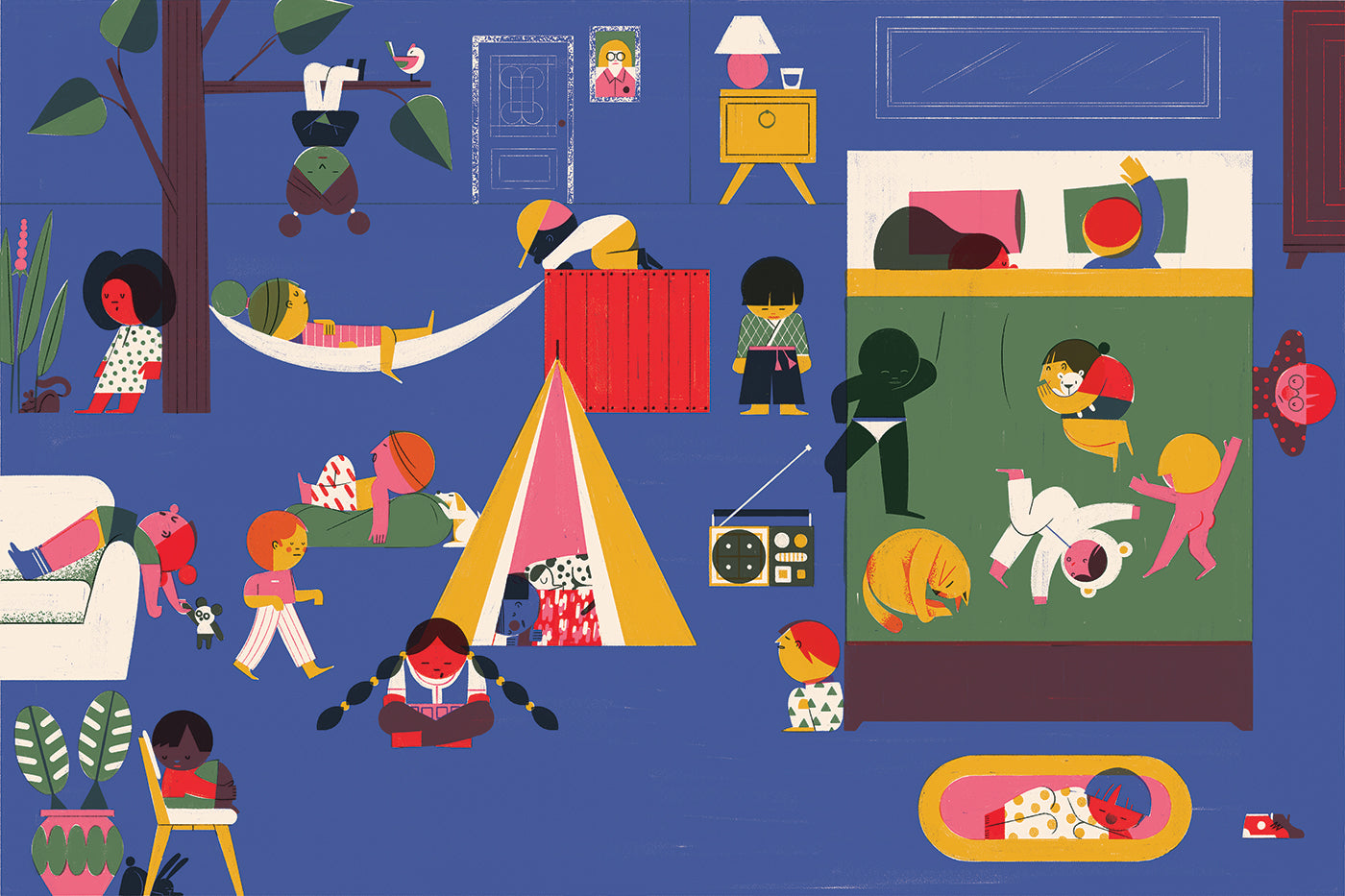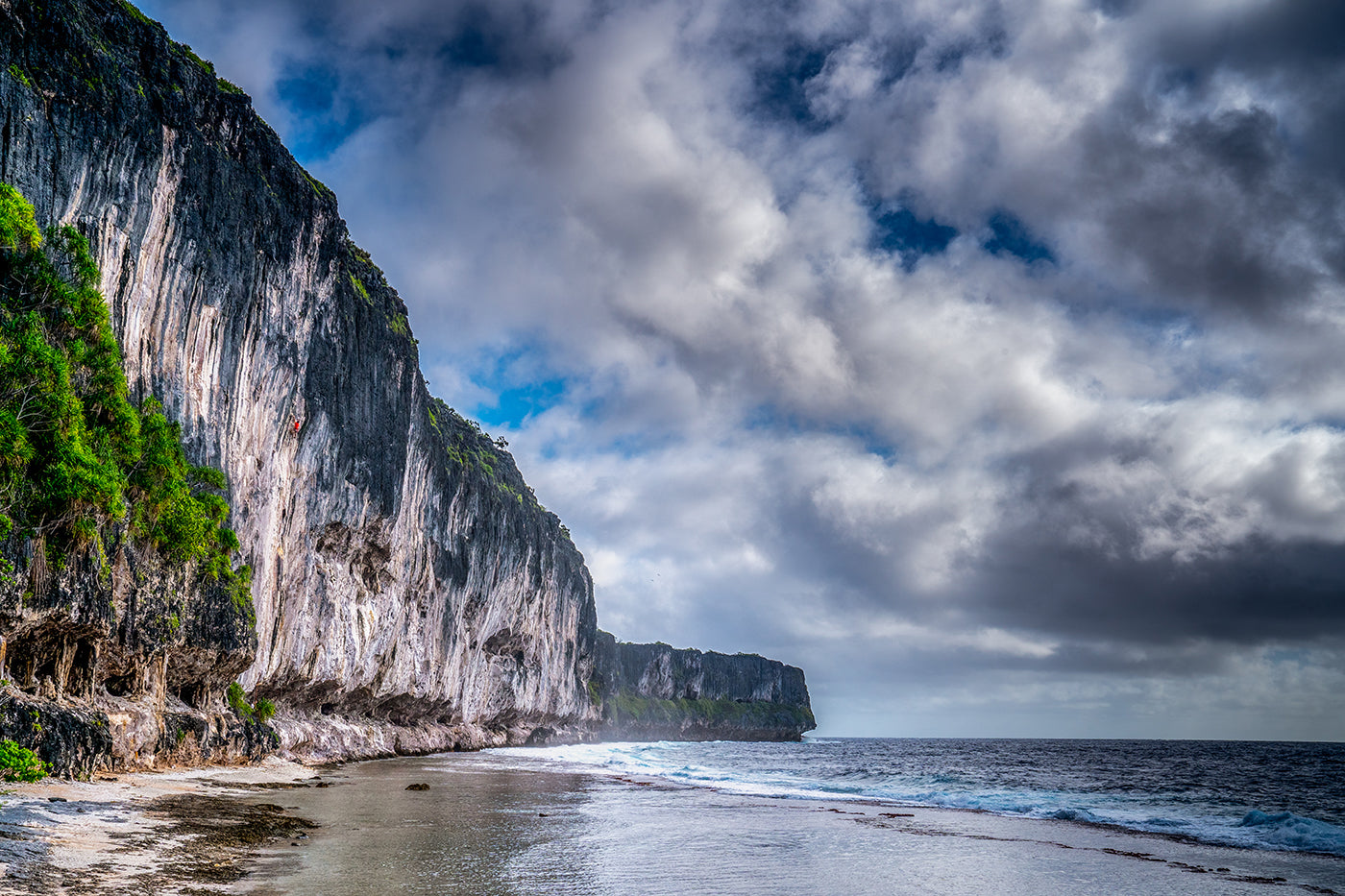
How Climbing Culture Helped Rebuild An Island
Julie Ellison explores how a tiny, former mining island in the South Pacific Ocean carved a new culture from its rocky forms
With a history of mining, Makatea in French Polynesia hopes to use climbing and other forms of ecotourism to grow and rebuild its community with a sustainable focus.
In the South Pacific Ocean, thousands of miles from any major landmass, lies French Polynesia, an overseas collectivity of the French Republic. Spread out throughout 1,240 miles (2,000 kilometers), the country comprises a chain of 118 islands and atolls that are divided into five groups. Amid these clustered dots is Makatea, a raised coral island in the northwest sector of the Tuamotu Archipelago. It is unique because of a ring-shaped island formed of coral—it is also classified as “uplifted,” meaning tectonic activity has raised it higher than other atolls, which are typically no more than 17 feet (5 meters) high. This might be the last place in the world one would look for rock climbing, but thanks to an ancient seismic shift, the rim of Makatea includes 10 miles (16 kilometers) of dramatic limestone cliffs up to 260 feet (80 meters) above sea level.
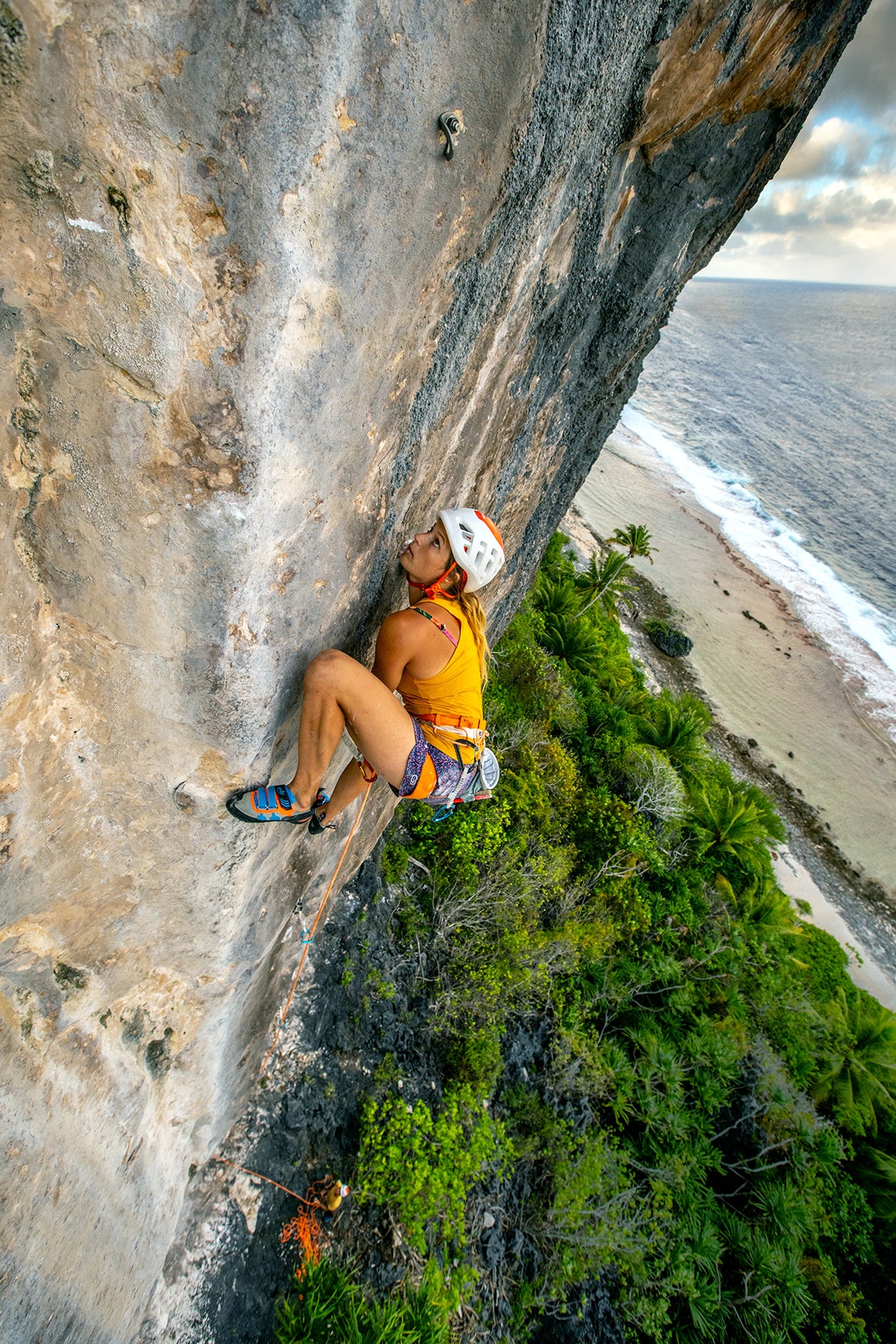
Makatea's mining history is prevalent across the island, abandoned phosphate mines and an endless panorama of cliffs has created a chance for Makatea to develop an economy around ecotourism. (Photo: Guillaume Broust, Bourg Saint Maurice, Cliffhanger)
Makatea’s history is based around phosphate mining. Starting in 1917, mining companies drilled holes deep into the rock to extract a pure form of phosphate, which is used as a fertilizer for crops. For decades, people in Makatea did the hard physical labor of moving the phosphate by hand, and that was the main industry. With a bustling population of more than 3,000 people, Makatea was an economic powerhouse in the region. In 1966, France started doing nuclear testing on nearby islands in French Polynesia, and they needed trained technicians to come to work the experiments on other atolls. Mining was quickly abandoned, and the workers left Makatea. With only about 10 families on the island, it became a ghost town with no electricity, about 30 people, and rotting mining equipment.
More than 50 years after it was abandoned, the population has grown to about 100 people, and mining has come back into the picture, along with its economic potential. New technology allows mining companies to dig deeper, and mayor Julien Mai had seen firsthand how it brought money again to other islands. However, the son of the mayor, Heitapu Mai, happens to be a climber and knew the potential of the island’s striking limestone. As the president of the Makatea Climbing Association, he and other local climbers had already established about 15 routes. Heitapu met Maciek Buraczynski, a rope access technician from Tahiti, and told him of the climbing potential on Makatea. The duo conjured up the idea to bring a bunch of climbers to the island to develop routes and enlisted the help of Erwan Le Lann, who had organized many climbing trips where the goal was new-routing. Erwan, the president of the Maewan Association, arrived on the island and immediately recognized the climbing possibilities, as well as the uniqueness of this cliff-covered island among other Polynesian isles that are mostly jungle.
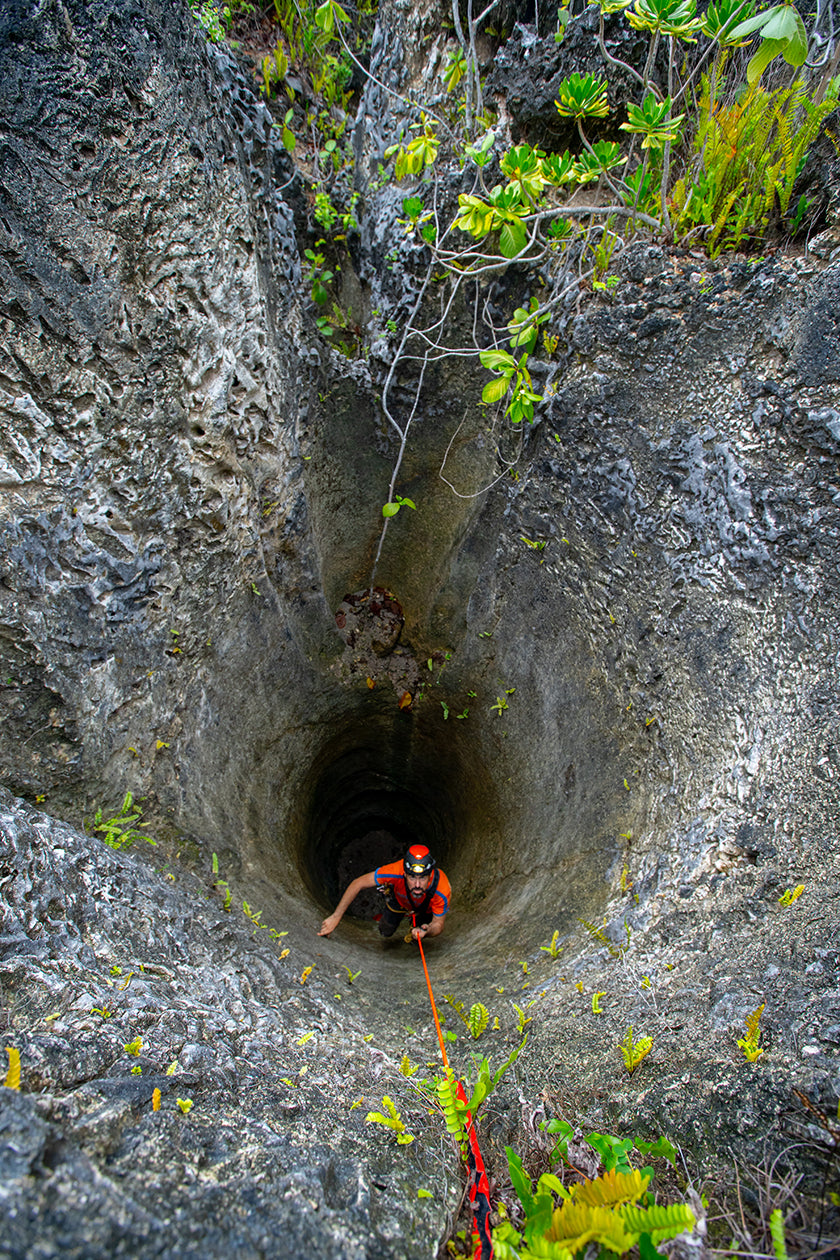
Olivier Testa explores one of the numerous holes left by mining to see if there is any water connection. (Photo: Guillaume Broust, Bourg Saint Maurice, Cliffhanger)
Having worked for Petzl, the French gear manufacturer, for more than a decade, Erwan had organized their annual RocTrip, where tons of routes are added to an undiscovered area, then elite climbers are invited to climb and experience the place. He knew exactly what to do. Thus, in 2019, more than 20 elite climbers from all over the world—France, America, Brazil, Germany, and others—traveled to the island to establish new climbs with the hope of bringing ecotourism and a new form of a sustainable economy.
Guillaume Broust was hired to document the process and create a film about the Makatea project. He says eight to ten bolters showed up for about two weeks, and “just bolted like hell in two main sectors.” Then a dozen or so climbers came and sampled all the new routes. “The first sector, Temao, is something more, like black rock, which was very crispy, very hard, and very painful with many hold shapes,” Guillaume says. “To get there, you just walk to the beach, and then you have the lines everywhere. The other sector, Moumu, is on the other side of the island, on the east side. This is more blank, white limestone with pockets. On half of the island, because of the digging, there is a limestone labyrinth with holes everywhere. The landscape is just crazy to watch, very dangerous, almost inaccessible. You walk on the very edge and if you fall, you fall 50 meters (165 feet) into a hole.”
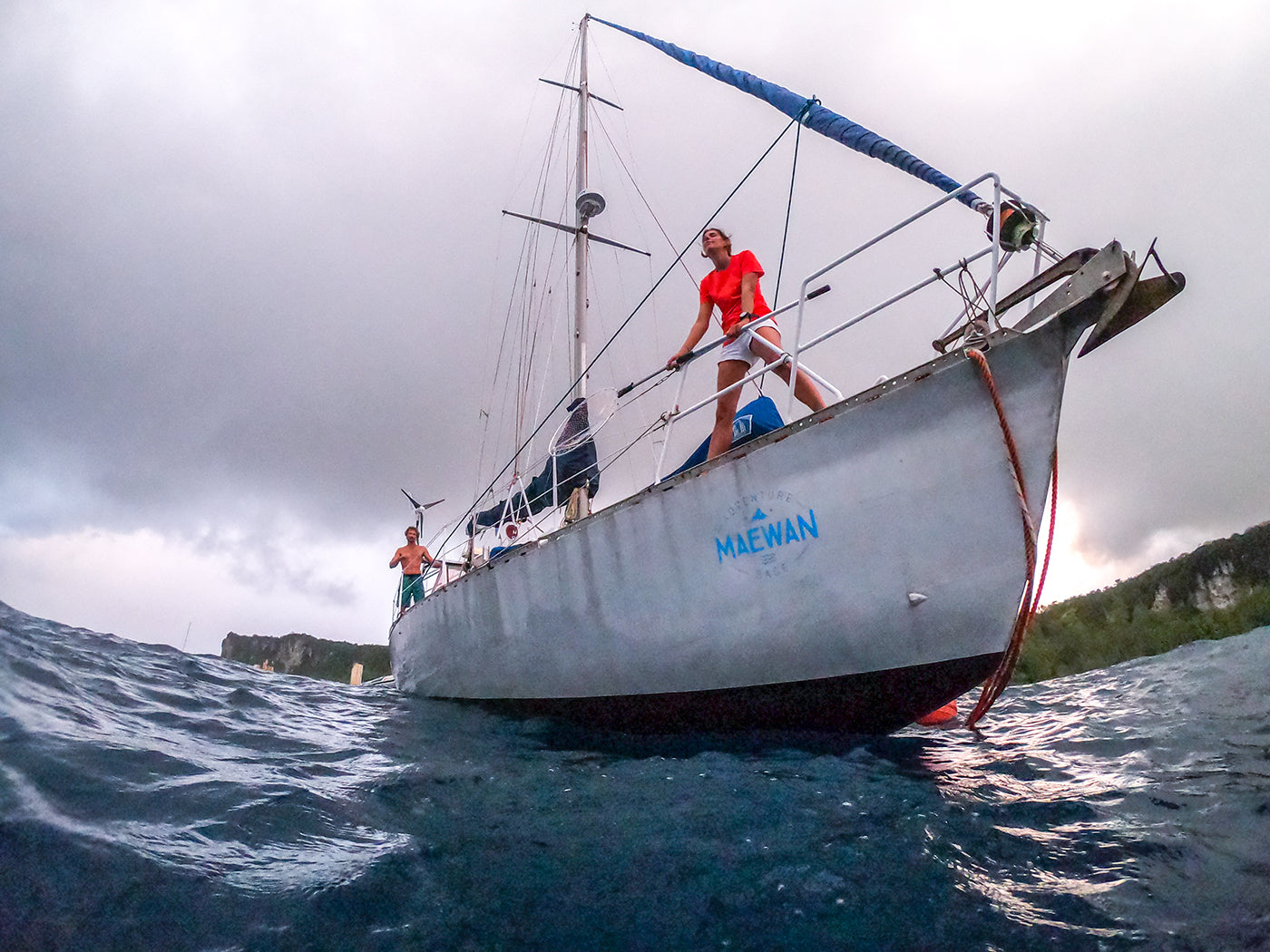
The Maewan boat, driven by Erwan Le Lann and Marion Courtois, the leaders of the Makatea expedition. (Photo: Guillaume Broust, Bourg Saint Maurice, Cliffhanger)
Another issue was the types of bolts used. As a result of the marine environment, and due to the salt and moisture in the air, bolts corrode quickly. It is similar to Thailand in that way, but Guillaume says it will never be as popular and well-traveled a destination as the limestone mecca of Thailand: “You have to get to Tahiti first, then wait for the boat. It’s kind of an expedition. It’s 14 hours on a boat from Tahiti, and one boat that goes twice a month for food shipment, beer, and stuff they don’t have on the island. It’s kind of a secret island.” He says of Makatea’s remoteness. As well as its lack of infrastructure, tourism will be small, but everything will make a difference. "Making it as big as Thailand was not the idea with the Maewan development.
All in all, there are about 100 routes on the island, with the potential for many, many more. The climbing ranges from short, easy clip-ups to moderate multi-pitches to difficult single rope lengths, and everything in between. During bolting, the rock was very naturally clean and did not require much removal of plants or loose blocks. Guillaume says that the people in all of Polynesia are friendly, but in Makatea, it was something special. They understood what the climbers were doing, and they were thankful. The three goals for the project were: sport development, environment, and human development. Part of that was building a program with the kids on the island to make them aware of the sustainability of the resources. Marion Courtois, the global coordinator of the project through Maewan, went to the school for three weeks, spending every day building a program that taught students about the island’s natural resources.
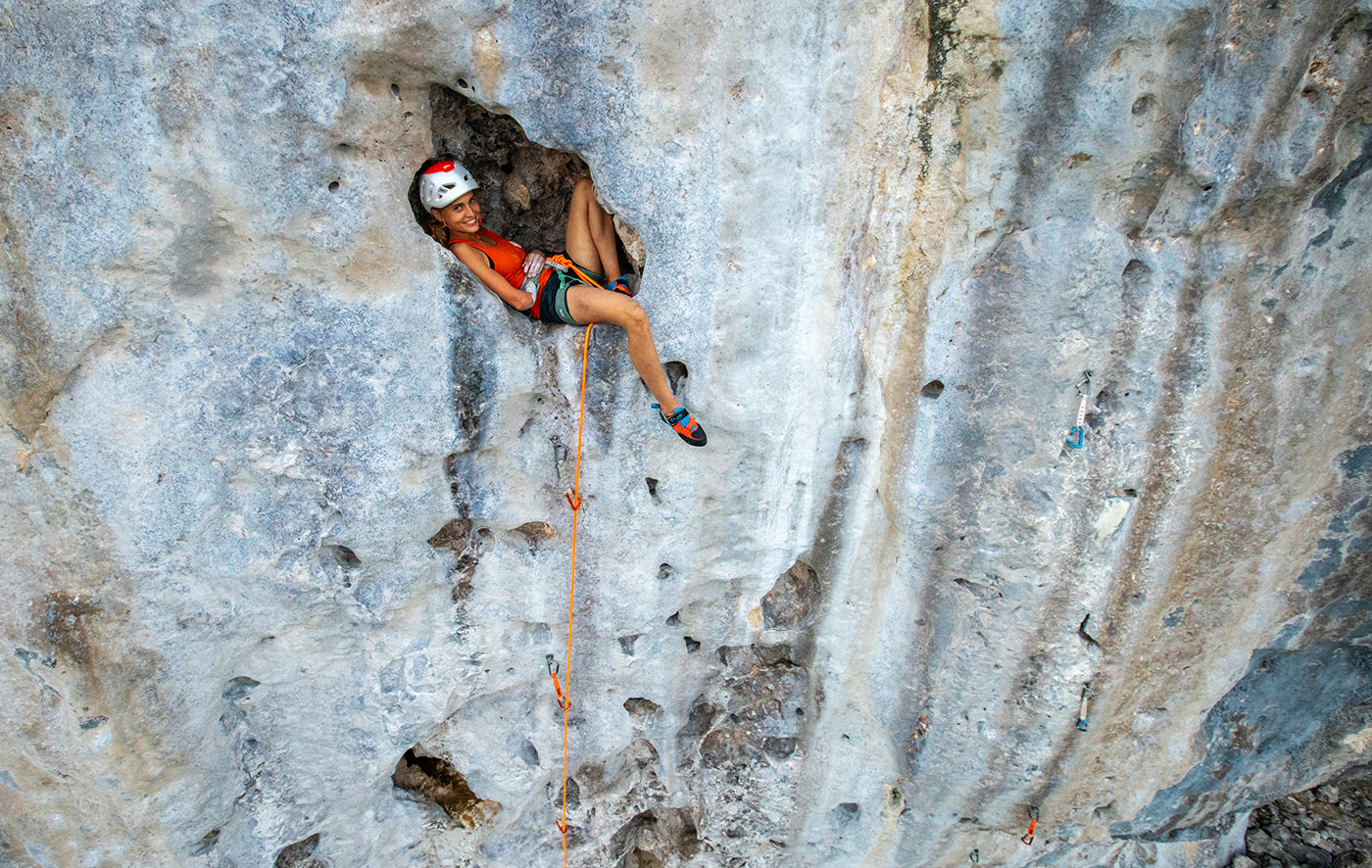
The Paraclimbing World Champion Solenne Piret, takes a rest on Esprit Traditionnel (6b+ / 5.10d). (Photo: Guillaume Broust, Bourg Saint Maurice, Cliffhanger)
The finale of the Makatea project to increase tourism on the island was a four-day festival to bring visitors to the island and show people the remarkable nature of this small raised atoll. The festival, called Makatea Vertical Adventure, gathered more than 150 individuals from all over the world for climbing, doing the newly installed via ferrata, rappelling, touring the historical sites, hiking, and caving. With so many ecotourism possibilities, and including incredible rock climbing, the hope is that Makatea will continue to grow its economy in a sustainable and environmentally friendly way.
The people and places that make up contemporary climbing culture. This story was originally featured in Cliffhanger.

